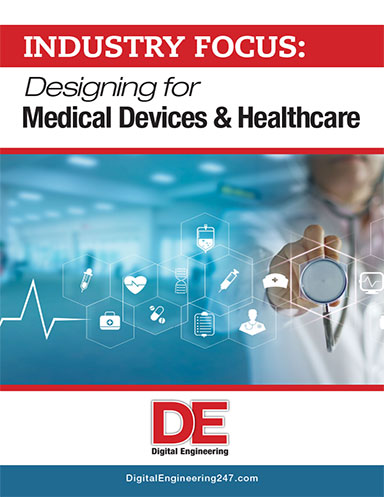Designing for Medical Devices & Healthcare
In this Special Digital Issue, we compile some of DE’s coverage of the many ways that design engineers are working with the medical sector and healthcare providers to integrate the two specialties in ways that benefit society as a whole.

April 18, 2019
From medical device design to surgery prep to implants and prosthetics, digital engineering technologies like computer-aided design, simulation and additive manufacturing are a perfect fit for many medical applications.
The challenge is collaboration between two complex fields: design engineering and its various specialities, and the medical industry and its specialities. If a simulation analyst and CAD expert within the same company can have difficulty communicating, imagine carrying that collaboration over to a completely different discipline that has its own vernacular, pain points and cultural challenges.
Thankfully, bridges are being built that allow some of the amazing advances in design engineering to have an impact on the medical sector. Additive manufacturing was one of the first technologies to build those bridges, figuratively speaking, as its customization and physical prototyping benefits were quickly recognized as game changers for a number of medical devices and applications. Still, it’s a long road from excitement over patient-specific implants or human organ and system simulations to ensuring they are certified as safe to use.
Latest News





Related Topics




